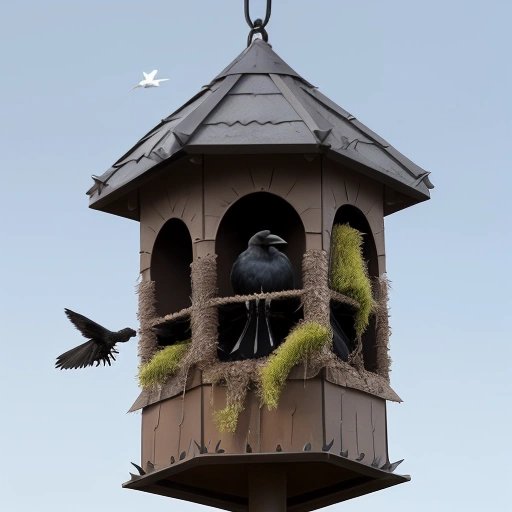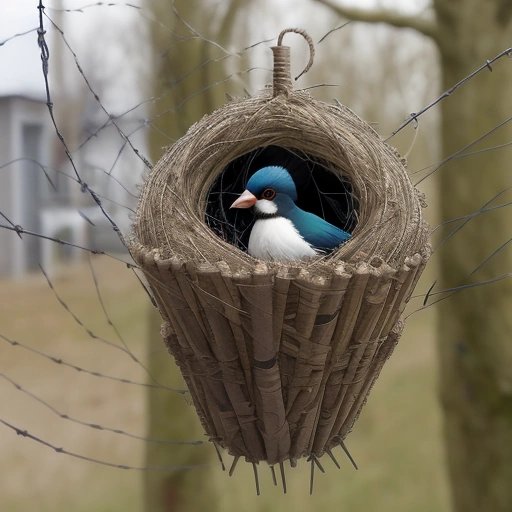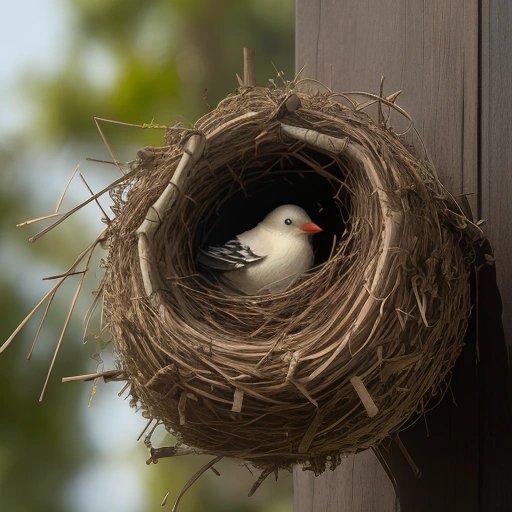In a groundbreaking study that has left ornithologists and bird enthusiasts astounded, it has been discovered that birds have taken a rather unconventional approach to nest building. A recent report reveals that birds are incorporating anti-bird spikes into their nests as a form of defense against predators. This revelation highlights the ingenuity and adaptability of these urban birds, as well as the fascinating materials they use to create their unique homes.
The use of man-made materials for nest building in birds is not a new phenomenon. In fact, the first report of a crow's nest made of barbed wire dates back to 1933. More recent news reports have documented the use of nails, screws, and even drug users' syringes in avian architecture. However, this new study provides the first well-documented evidence of birds using anti-bird spikes as nesting material.
The study focused on two species of birds: the carrion crow (Corvus corone) and the Eurasian magpie (Pica pica). Researchers discovered that these birds primarily used anti-bird spikes in their nest construction. Carrion crows in Rotterdam, The Netherlands, and Eurasian magpies in Enschede (The Netherlands), Antwerp (Belgium), and Glasgow (Scotland) were observed tearing entire strips with sharp metal pins off buildings and incorporating them into their nests.
To further investigate this phenomenon, the researchers analyzed two nests—one constructed by a carrion crow and the other by a Eurasian magpie. These nests, now part of the collections of the Natural History Museum Rotterdam and the Naturalis Biodiversity Center, were carefully studied to understand their composition and structure.
It was found that Eurasian magpies may use the anti-bird spikes not just as ordinary nest material, but also position them strategically in the dome, over-arching the nest. This hints at a functional use, as the anti-bird spikes could potentially ward off other birds, such as crows that prey on magpie eggs and offspring. In this way, the sharp material could benefit nest defense, complementing the magpies' reliance on thorny branches for protection.
Interestingly, other observations of magpie nests revealed the use of barbed wire and knitting needles. It seems that in the Anthropocene—the current geological age marked by significant human impact on the environment—urban birds are increasingly adopting alternative nesting materials. These materials, once designed to deter birds, are now being repurposed by birds themselves.
With this discovery, it becomes evident that birds are capable of adapting to their changing environment and utilizing whatever resources are available to them. Urbanization and the dominance of anthropogenic mass have led to birds incorporating man-made materials into their nests. Even anti-bird spikes, which were intended to discourage birds from landing, have become an integral part of avian architecture.
This study opens up a new perspective on bird behavior and raises intriguing questions about the future of avian nesting. As birds continue to adapt to urban environments, it is likely that they will incorporate even more unconventional materials into their nests. The boundaries of avian architecture are expanding, and it seems that anything may become part of a bird's nest in the Anthropocene.
The remarkable findings of this study underscore the resilience and resourcefulness of birds in the face of human-altered landscapes. By observing their interactions with man-made objects, we gain a deeper appreciation for the complexity of avian behavior and their ability to thrive in urban environments. As we continue to coexist with these feathered creatures, it is crucial to understand and protect their habitats, even if they include unconventional nesting materials like anti-bird spikes.


